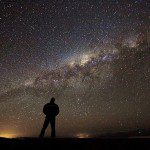
New today on the website of the Interpreter Foundation — and, as always, accessible at absolutely no charge:
Science & Mormonism Series 1: Cosmos, Earth, and Man The Earth and Man
Part of our book chapter reprint series, this article by James E. Talmage originally appeared in Science & Mormonism Series 1: Cosmos, Earth, and Man (2016). [Actually, it was originally published in the Deseret News on 21 November 1931, having first been delivered as an address in the Tabernacle on Temple Square in Salt Lake City on 9 August 1931.]
Abstract: Elder James E. Talmage, the late apostle and geologist, asserts the reality of death before the Fall. He describes how vegetation and animals “lived and died, age after age, while the earth was yet unfit for human habitation.” He affirms the reality of Adam and Eve as historic personages, while asserting that “there must have been races of human sort upon earth long before” our “first parents” lived. While mindful that evolution was, in 1930, “but a theory, an unproved hypothesis” still in need of additional empirical support, he reminds the reader that the Gospel “is up-to-date and ever shall be.”
***
Some may find this quite unsurprising, but research in Utah may help us to understand the planet Mars:
“Rare salt formations appear along the Great Salt Lake”
I have to admit that I’m relieved. I was afraid that I was about to be outed:
“Could Unseen Aliens Exist Among Us?”
You can’t argue with science:
“Report: Everything Slightly Worse Than Yesterday”
Perhaps I’ll try this someday:
***
I share here another passage from Roger Trigg, Beyond Matter: Why Science Needs Metaphysics (West Conshohocken, PA: Templeton Press, 2015), which I read and marked up some time back. Dr. Trigg, the founding president of the British Philosophical Association, was a student of the late A. J. Ayer, one of the principal thinkers of the school of “logical positivism.” He is currently a professor emeritus of philosophy at the University of Warwick and a senior research fellow at the Ian Ramsey Centre of the University of Oxford:
According to the program of the Vienna Circle, “the scientific outlook knows no insoluble riddle.” What could not be dealt with by the empirical sciences had to be a “pseudoproblem.” While this was a tremendous vote of confidence in the capabilities of scientific method, it gave a rather empty victory to science. It was one purely through definition. What it could not deal with was to be dismissed. It was not so much that science could explain everything, but what it could not explain was just unverifiable, unscientific, and therefore “nonsense.” (8)












